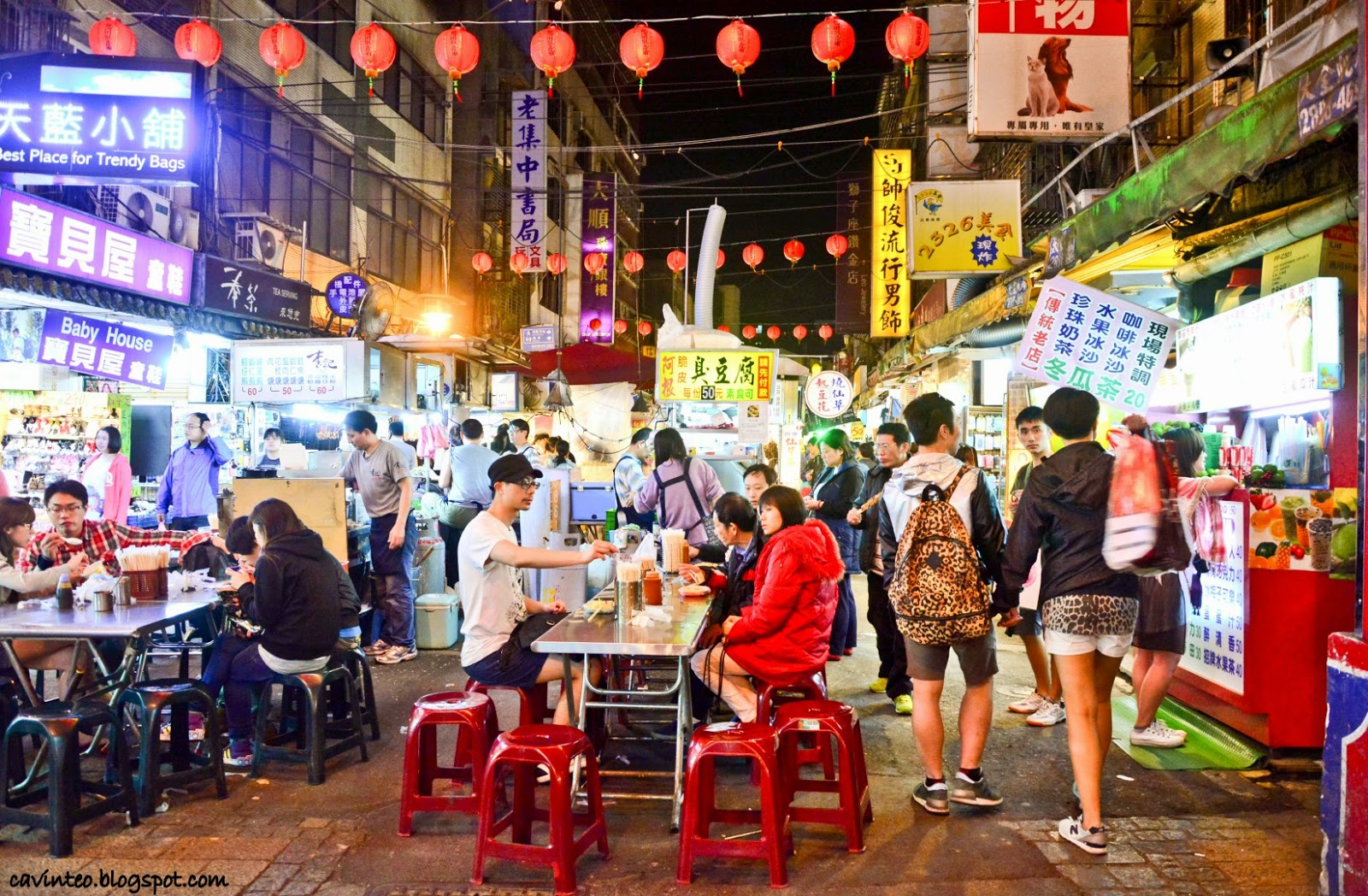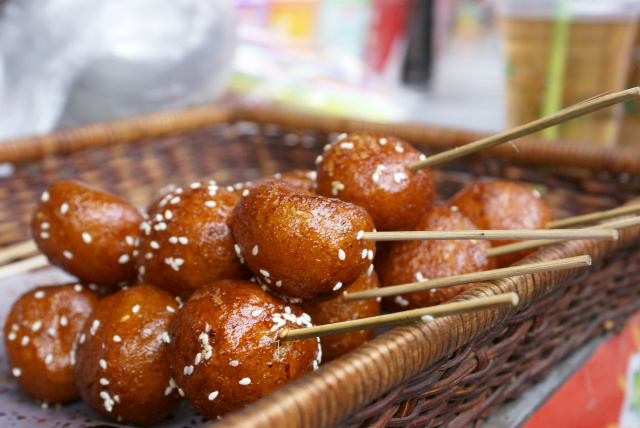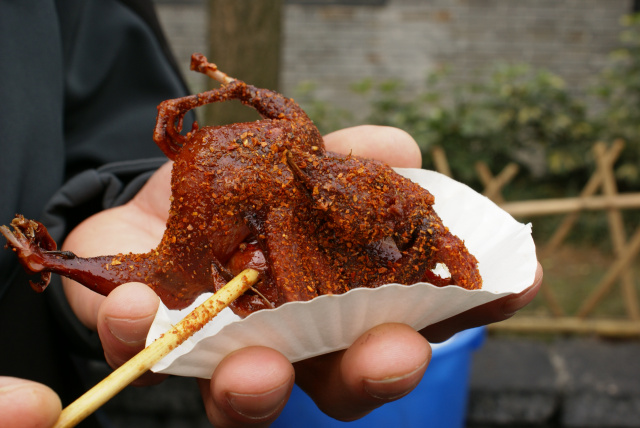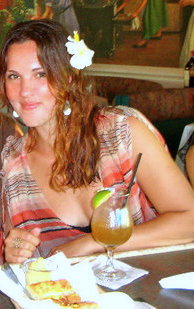Night Markets and Cultural Identity
Gastronomy Student Celine Glasier shares this post in our series “Perspectives from Anthropology of Food.”

My grandmother lives in a very small town in the south of France called Montauroux. It’s a little, quaint community that is nestled on top of a hill. There are outdoor cafes in the town center where elderly men spend their days and evenings playing pétanque, bi-weekly farmers markets, and peach orchards near-by for warm weather picking. My memories of the summers when I’d come to visit her are filled with ice cream and swimming in the nearby Mediterranean Sea. But what excited me the most about my summer visits to my grandmother’s was the open air night markets that would take place in the adjacent larger cities. Every Thursday night in July people would come together to sell their goods and socialize with each other. Each town had a different location for their markets, but they usually took place along the waterfront, with an occasional short firework display. It was the way to celebrate the summer. I remember being seven years old and feeling excitement and anticipation all day long when my grandmother would take me. And as soon as we left, I’d ask to go again next week.

Researching global night market trends for Anthropology of Food, I discovered that many cultures organize night markets. Taiwan’s proliferation and popularity of night markets is especially interesting. There are hundreds of night markets in Taiwan, and each offers its own version of snack foods called xiaochi (or small eats). Xiaochi are considered one of the most authentic forms of Taiwanese foods, and like markets themselves, there are hundreds of them. They typically come fried, or in a soup broth, or on a stick, are small, bite-sized, and generously seasoned with condiments. A chef in Taiwan named Chuang Pao-hua is preserving the art of xiaochi and Taiwanese cuisine by teaching locals and foreign student how to cook xiaochi with gu zhao wei (the Taiwanese traditional flavor preserved through generations of recipes).

Xiaochi are unique because they not only represent cultural identity but, for the most part, they are found solely in night markets. The originating market to which they belong is also where you can find the most authentic version, and local towns or provinces are often named after the local xiaochi dishes they serve. You can go to a night market in Taipei, and another in Tainan, and find different and distinct versions of xiaochi that embody the local flavor.
But what really drew me to understanding night markets in Taiwan was the energy they epitomize and the transformation of local space through them. Because they are often hot, crowded, and loud, night markets generate an energetic quality known as renao. Renoa translates into “a manifestation of the human flavor that is generated through enthusiasm and human interactions” (Yu 2006, 132). It’s the collective human energy you get when the senses are heightened and life is being enjoyed.

In this altered atmosphere, people can ignore cultural rules for appropriate behavior, are allowed to act leisurely, and become renewed through experiencing pleasure in their daily life. People act at ease. Night markets provide a sensorial experience similar to that from participating in a religious space. In a church or temple, your senses are altered through incense or various smells, meditation, organ music, and colorful visual representations or statues. Night markets alter your senses as well, and stepping into one, you enter another world.
Night markets are also important because they serve as a place for public activity and socialization. The energy that transforms a space that’s designated for one purpose during the day serves a different purpose at night. In Taiwan, the night is a time for socializing. Walking through night markets is one of the most popular nighttime activities in Taiwan, as it is a chance to be seen by others and satisfy social needs. Through the experience of heightening the senses of taste, sound, and tactile heat, from cooking and from other bodies, night markets serve as a means of communicating Taiwanese identity, socialization and commensality. As an ethnic group, gathering communally allows for communicating traditions, folklore, values, and cuisine. Night markets are one way that Taiwanese culture has been able to create a divergent culture and preserve identity. Night markets and xiaochi are a way of proliferating and preserving authentic Taiwanese culture. They are for the people.

When I think back now on the night markets I went to with my grandmother, I realize that part of their appeal was the vastness and richness of colors and smells. The scent of roast chicken skewers, corn grilling, and fresh breads and sugary pastries mixed with the sea breeze, the sounds of people congregating and conversing, and the sight of colorful snack foods and icy summer drinks are all deeply embedded in my memory. It was a place in which I was allowed to indulge myself and forget the rules. So what if I had two desserts? Under the cloak of the night, and with my grandmother, different rules applied.
Works cited:
Yu, Shuenn-Der. 2004. “Hot and Noisy.” In The Minor Arts of Daily Life: Popular Culture in Taiwan, ed. David K. Jordan, Andrew D. Morris, and Marc L. Moskowitz, 129-149. Honolulu: University of Hawaii Press.
Xiao-chi images from https://xmarxchicago.wordpress.com/2011/03/21/xiao-chi/